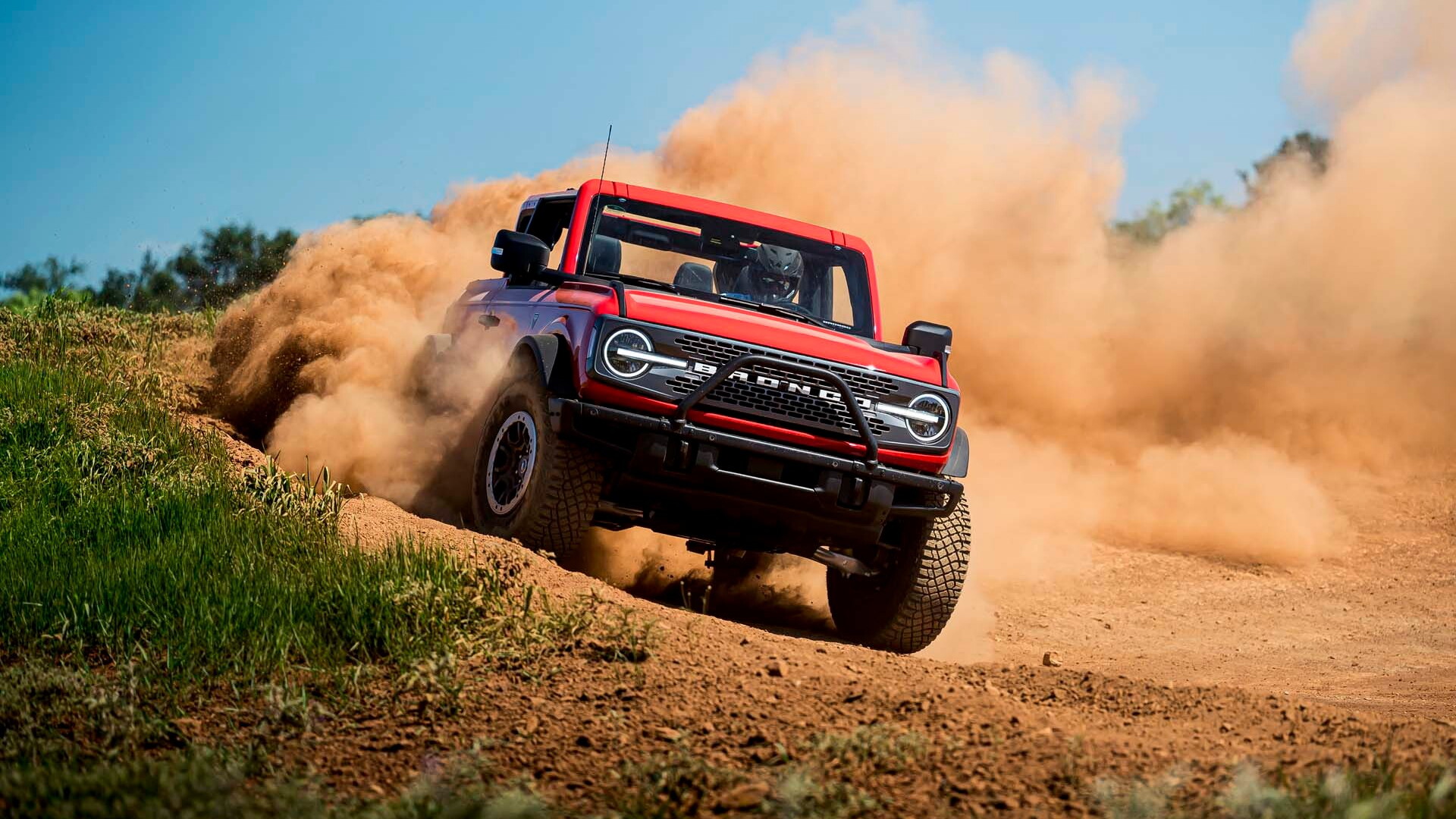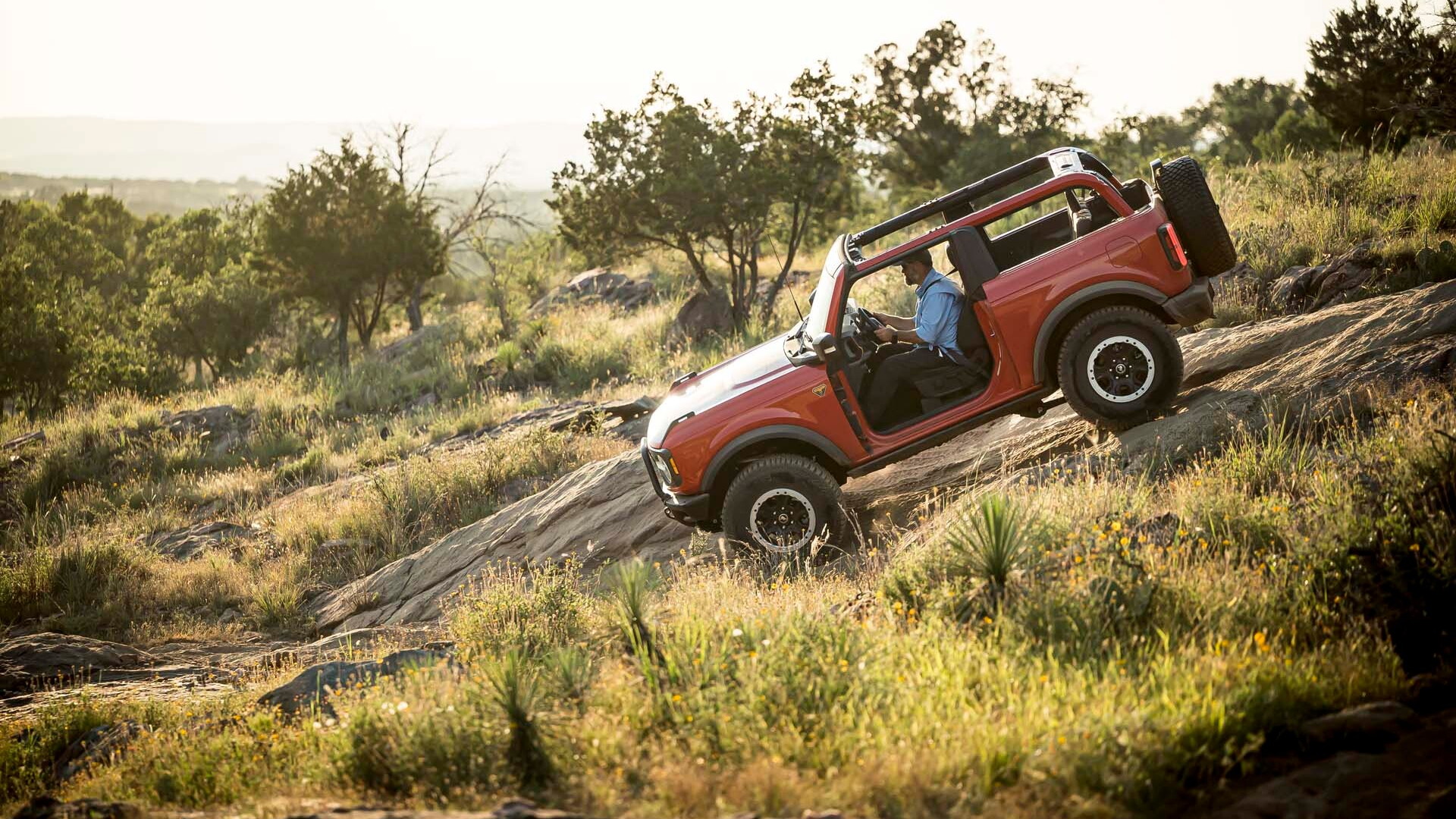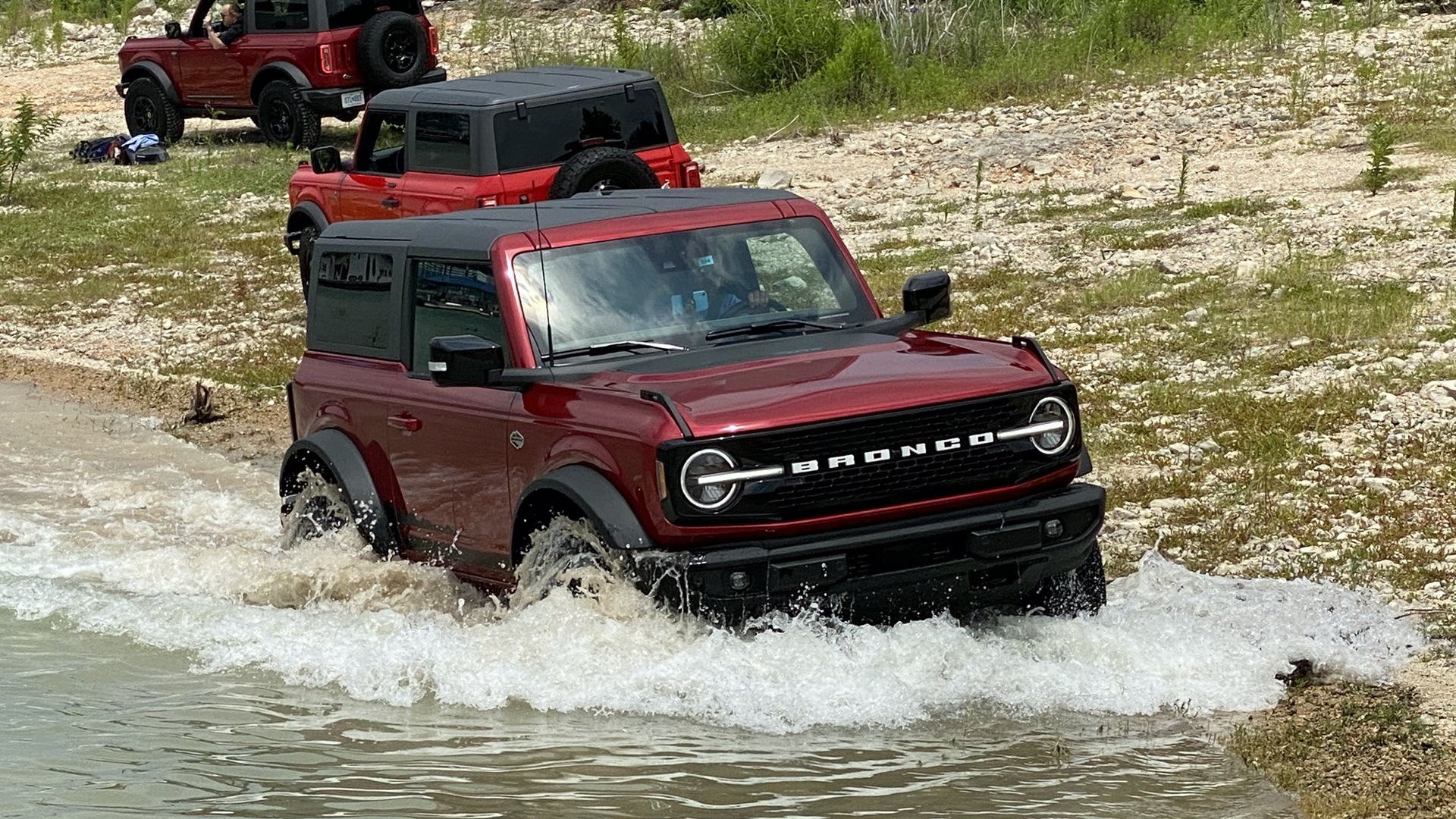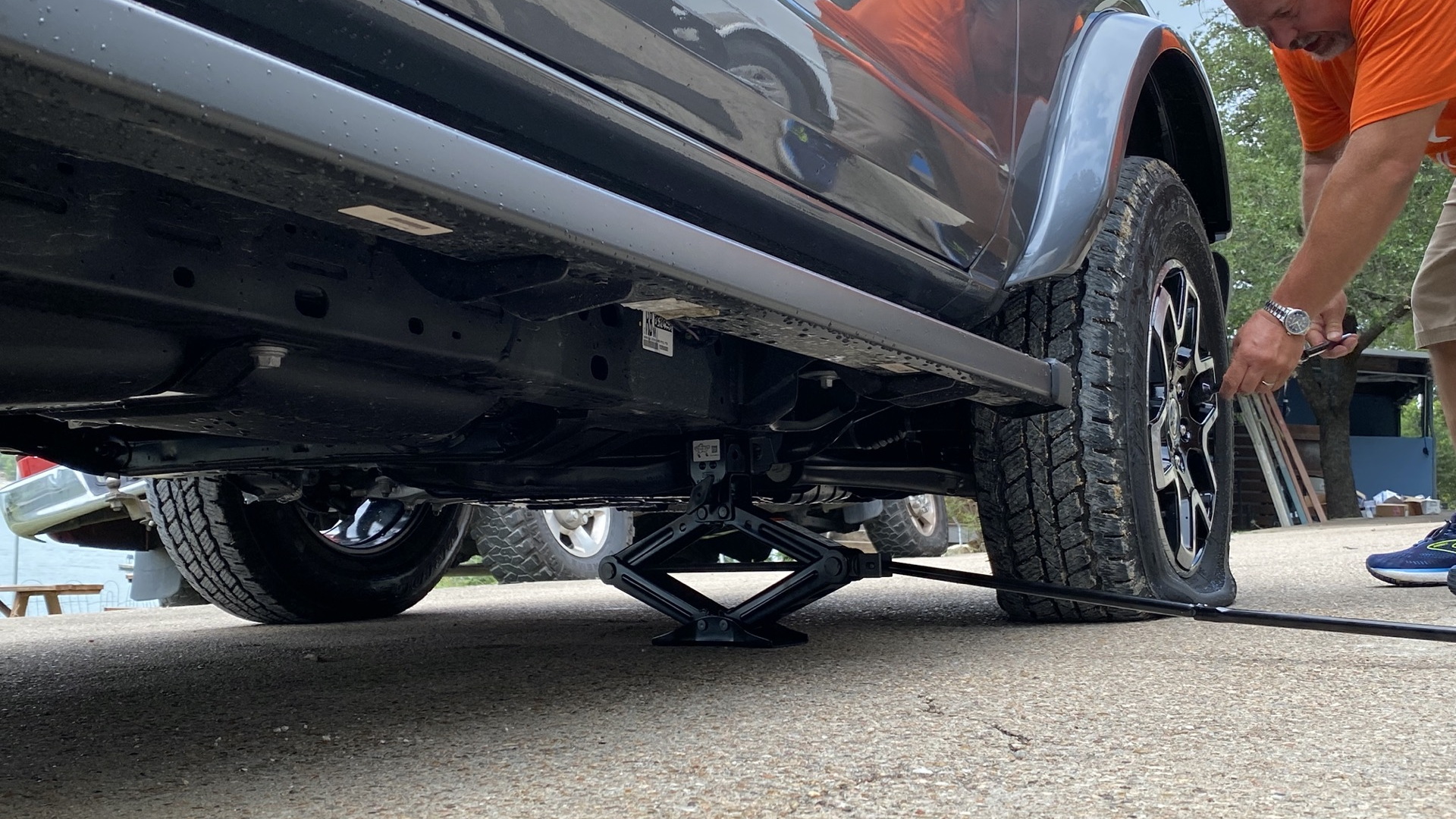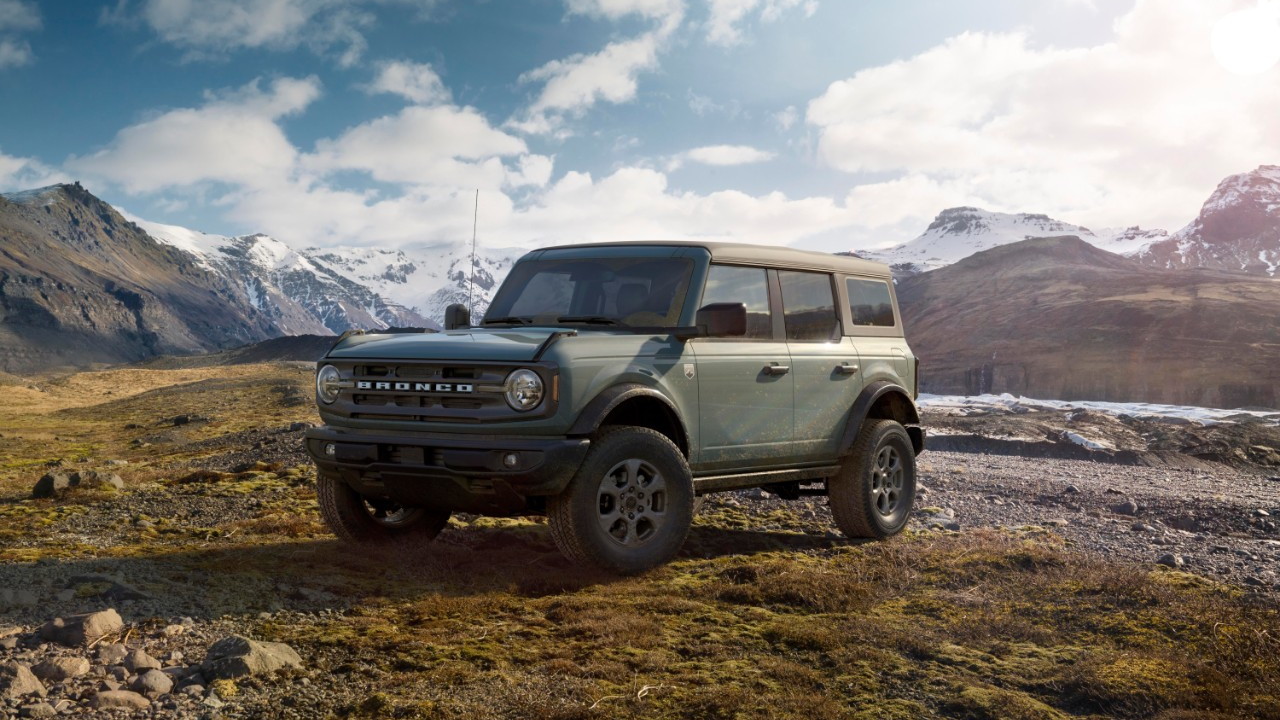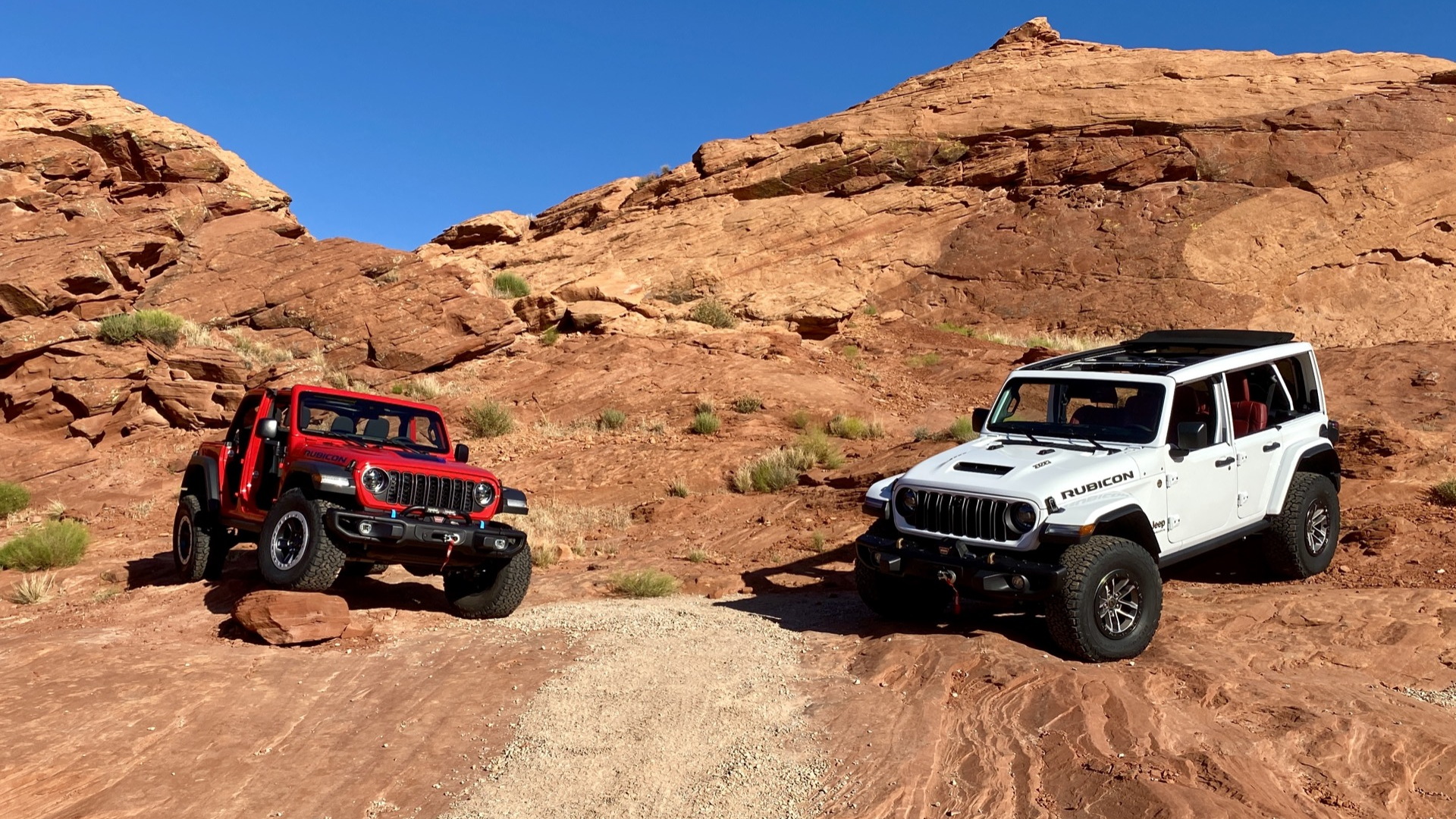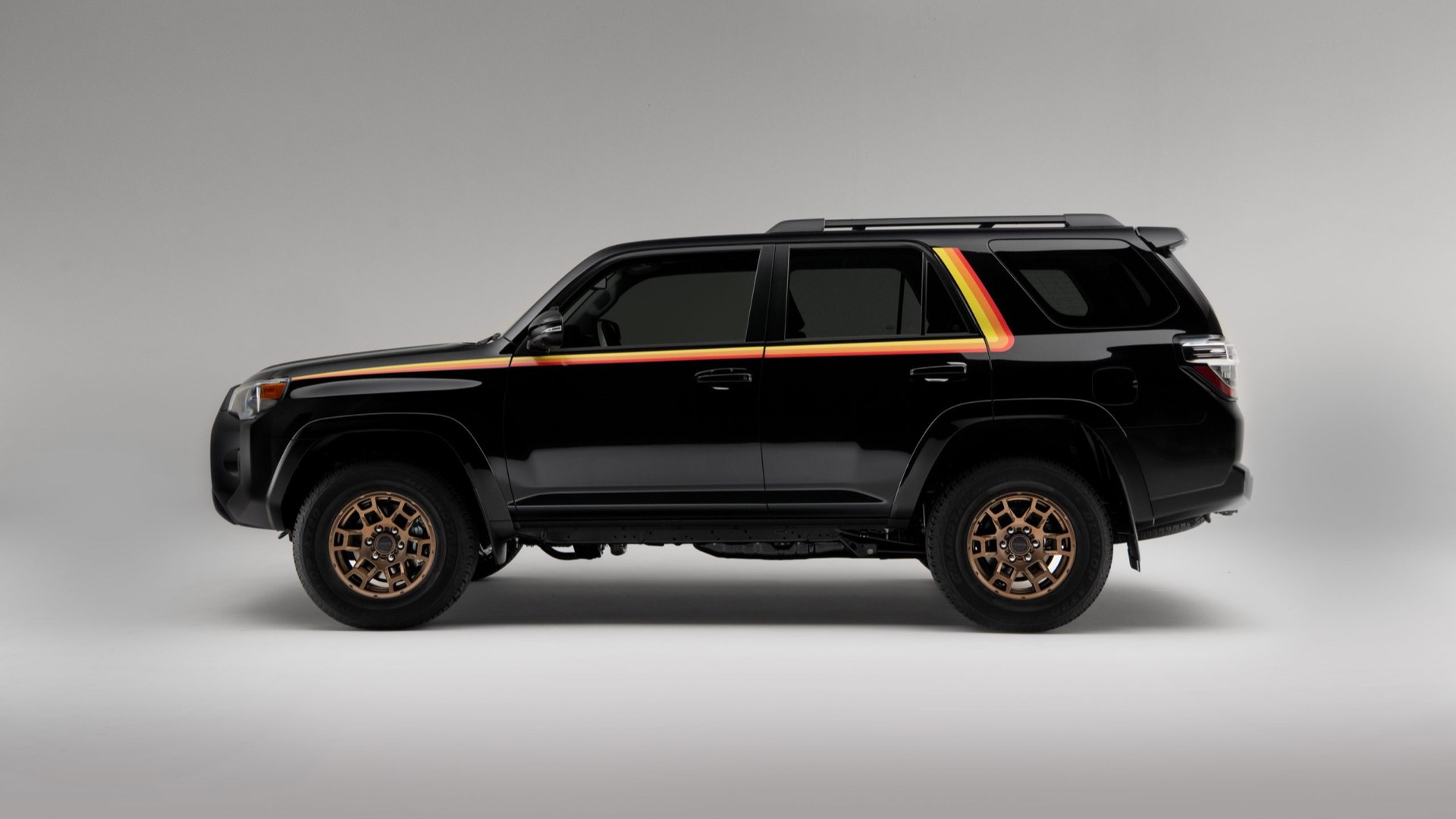In the Texas Hill Country outside Austin, the Ford Bronco returned to its natural habitat. The 2021 Bronco off-road SUV climbed granite shelves slick with mud, negotiated rutted paths boxed by Texas cedar and pocked with prickly pear, navigated craggy ravines strewn with limestone rock, and waded muddy creeks in water as high as the fender flares. It also showed off its domesticated side, from the statehouse in Austin to the million-dollar byways along the Colorado River.
It did it all with ease and joy.
The joy was mine. Even when I popped one of the 32-inch all-terrain tires on a mythic landshark lurking in an inlet, driving the new Bronco at the media preview was a blast. Following the Bronco’s 25-year absence, Ford has exceeded expectations for the most hyped vehicle in years.
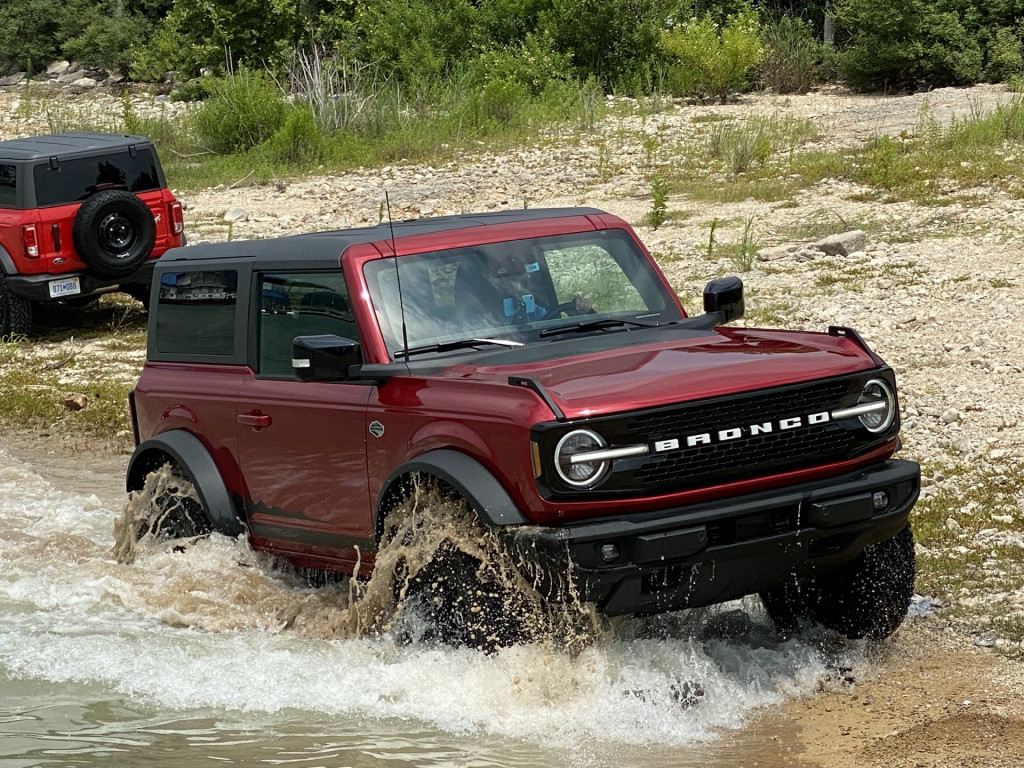
2021 Ford Bronco
I road tested a mid-grade Outer Banks model equipped with the uprated 2.7-liter twin-turbo V-6 used in the Ford F-150. In the Bronco it makes 315 hp and 410 lb-ft of torque on 87 octane, but Ford likely filled it with premium to crank out 330 hp and 415 lb-ft. The big Bronco sheds its 4,558 pounds like a big fella jumping in a pool with an estimated 0-60 mph time in the low-six-second range when run in Sport mode.
Sport is one of seven available modes that can be dialed into a durable knob on the console. When you rotate the knob, the instrument cluster shows the drivemode rainbow, and an icon for the chosen mode appears dogeared in the corner of the display. Dialing into Mud/Ruts mode automatically engages 4L, and switching into Baja mode when equipped automatically shifts into 4H. Four-wheel drive comes standard with either a base 2-speed transfer case with shift-on-the-fly capability, or a more rugged version with a Dana 44 solid rear axle and available front and rear lockers.
The 2.7 only comes with the quick-shifting 10-speed automatic transmission. It’s smooth and confident, and feels like it skips first entirely on its decisive march up the ladder. For those who #GiveAShift or for those who don’t want the $1,895 upcharge for the 2.7 and $1,595 for the 10-speed, the Bronco comes standard with a 2.3-liter turbo-4 used in the Ranger mid-size pickup. It puts out 275 hp and 315 lb-ft (or 300 hp and 325 lb-ft with premium) and comes with a 7-speed manual, which is essentially a 6-speed with a low crawler gear. Low range and the crawler gear team up to create a 94.75:1 crawl ratio that helps on the trails when the going has to be slow and you don’t want to hover over the clutch.
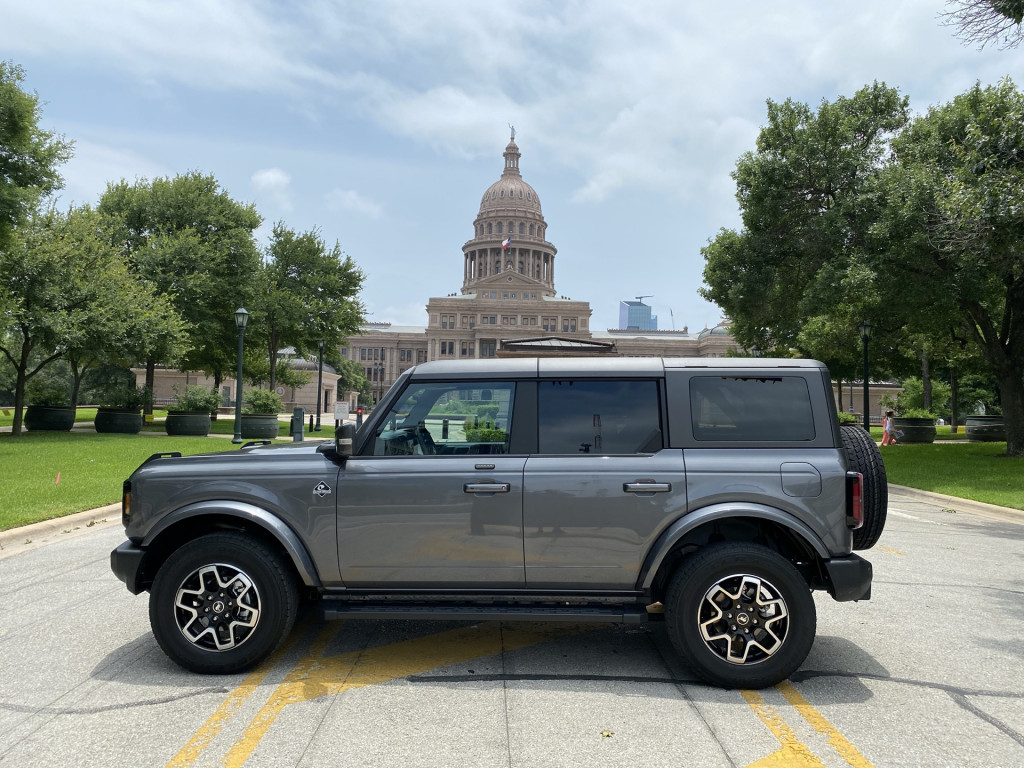
2021 Ford Bronco
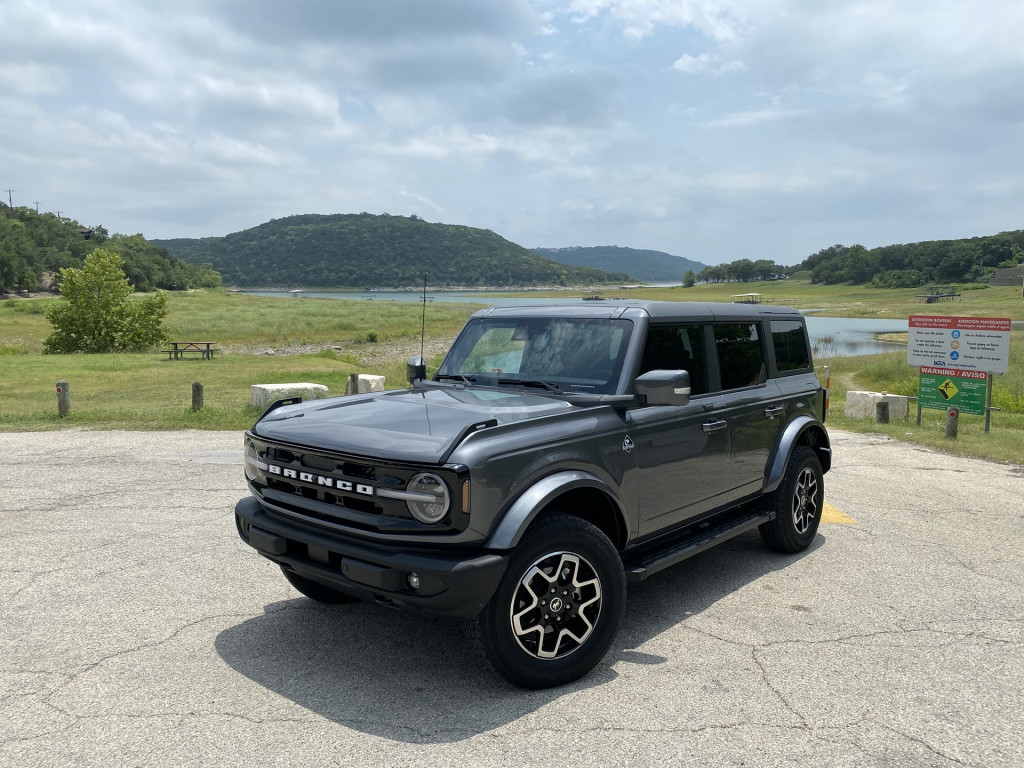
2021 Ford Bronco
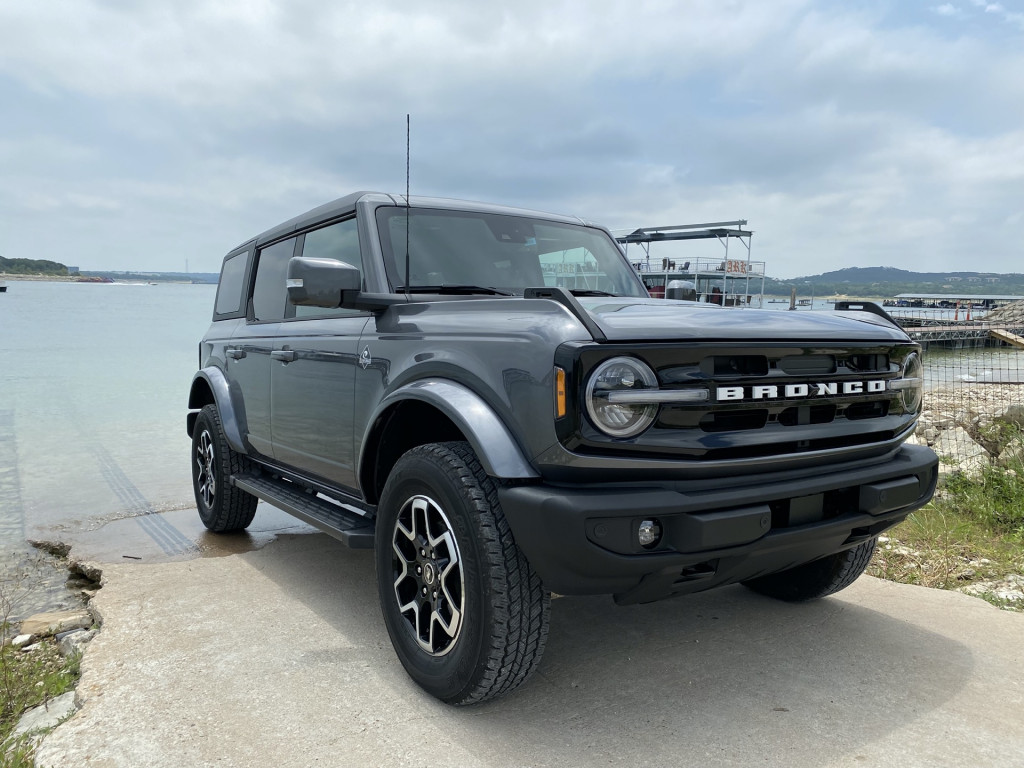
2021 Ford Bronco
On the road, the four-door Outer Banks hardtop let in the kind of wind noise expected from a convertible with removable doors. The square side mirrors mount to the frame instead of the doors so you can still use them when going doorless, but they fight aerodynamics along with the brick-like body of the Bronco. The visors and clasps chattered at highway speeds, and the 32-inch Dueler all-terrain tires wrapped over 18-inch wheels hummed with the road. But overall, the ride was calm, and the engine noise muted until called upon.
Riding on a high-strength-steel platform that will gird the next generation Ranger, the 2021 Ford Bronco utilizes an independent double wishbone front suspension and a solid rear axle with coil-over shocks to buffer road imperfections. Yet HOSS heavy-duty dampers and long-travel coil springs enable suspension travel for off-roading.
The lack of a solid front axle and an electric-assisted rack-and-pinion steering makes for smoother on-road driving. The steering adjusts with three drive mode selections, offering more resistance in Sport mode and a looser feel in Normal and Eco. The wheel stays on center without needing constant corrections like in a Wrangler, and the steering is relatively direct. It feels stable on the road, without getting pushed around by the wind or jouncing over road seams.
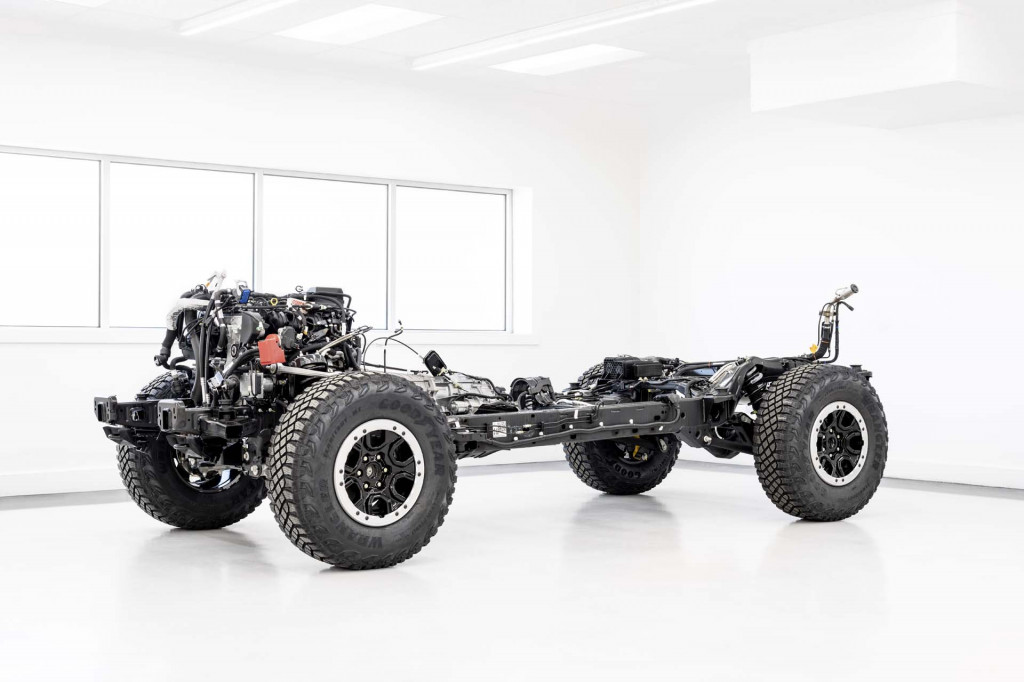
2021 Ford Bronco
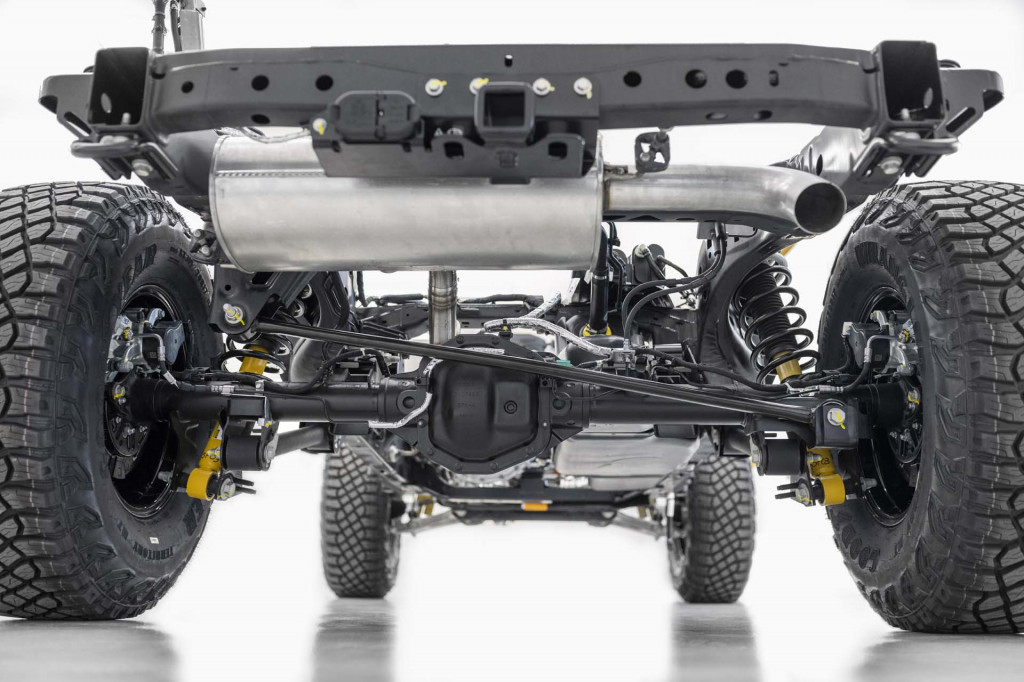
2021 Ford Bronco
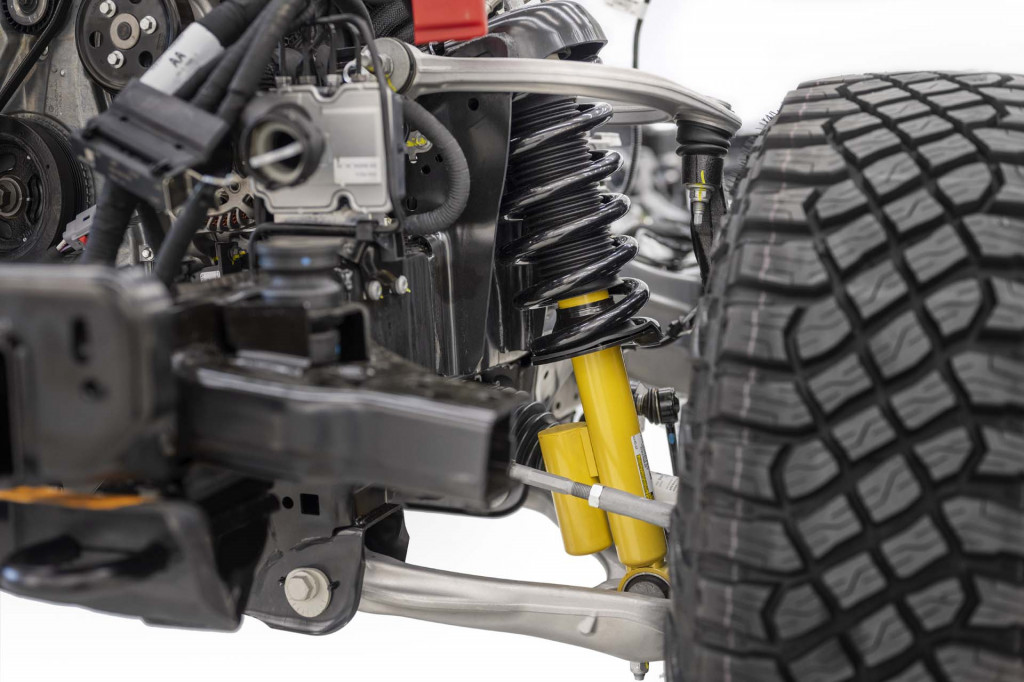
2021 Ford Bronco
In short, it handles daily domestic duties with more comfort than the Wrangler, even with the ride and handling improvements of the current JL.
My tester had the $3,590 Lux package (the loftiest of the three comfort packages) with adaptive cruise control that worked well maintaining its lane and the distance from the lead car. That package also includes a 12.0-inch touchscreen (standard is 8.0-inch) and a surround-view camera system that not only helped while parking, but proved even more helpful on the trail, too.
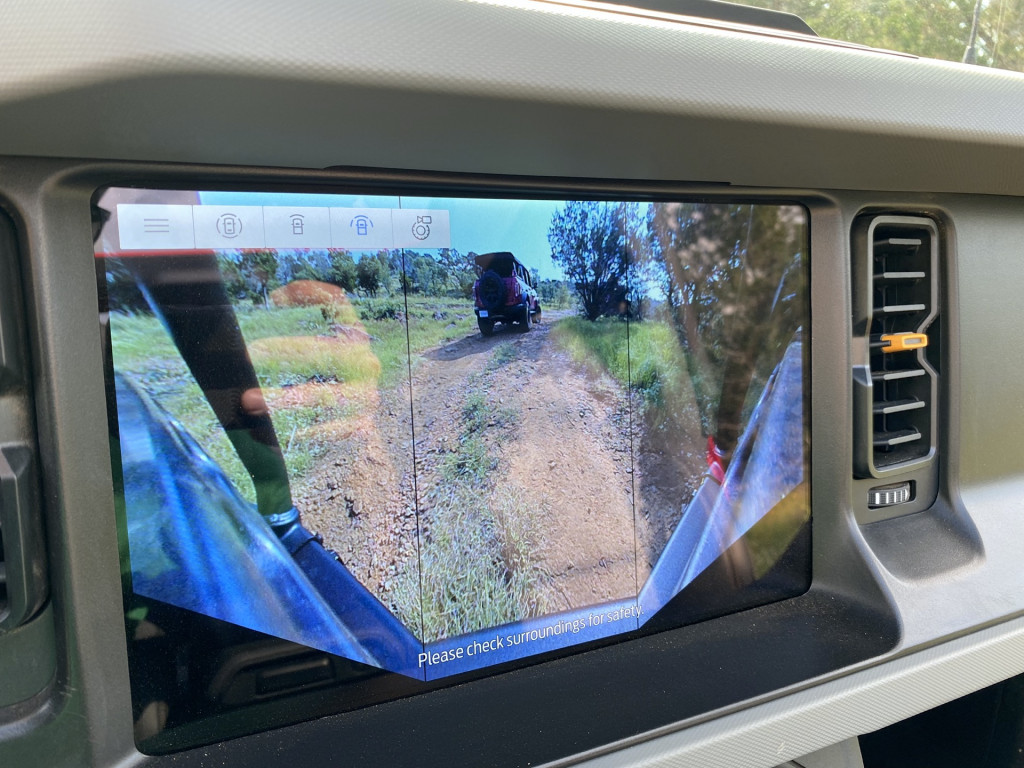
2021 Ford Bronco
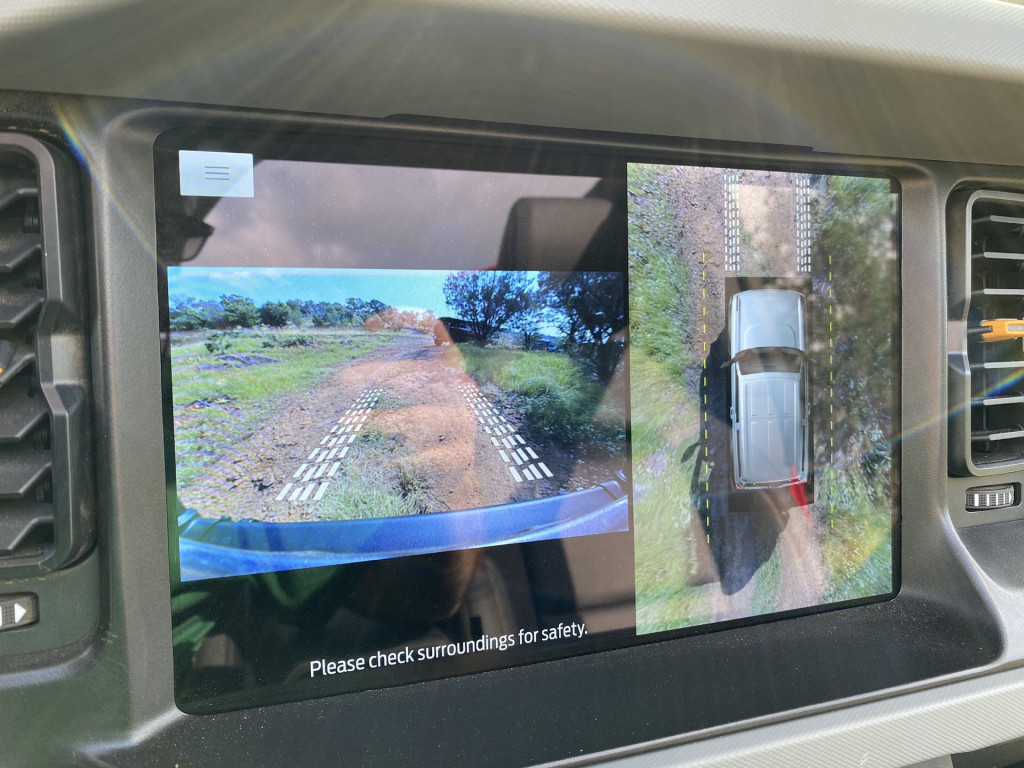
2021 Ford Bronco
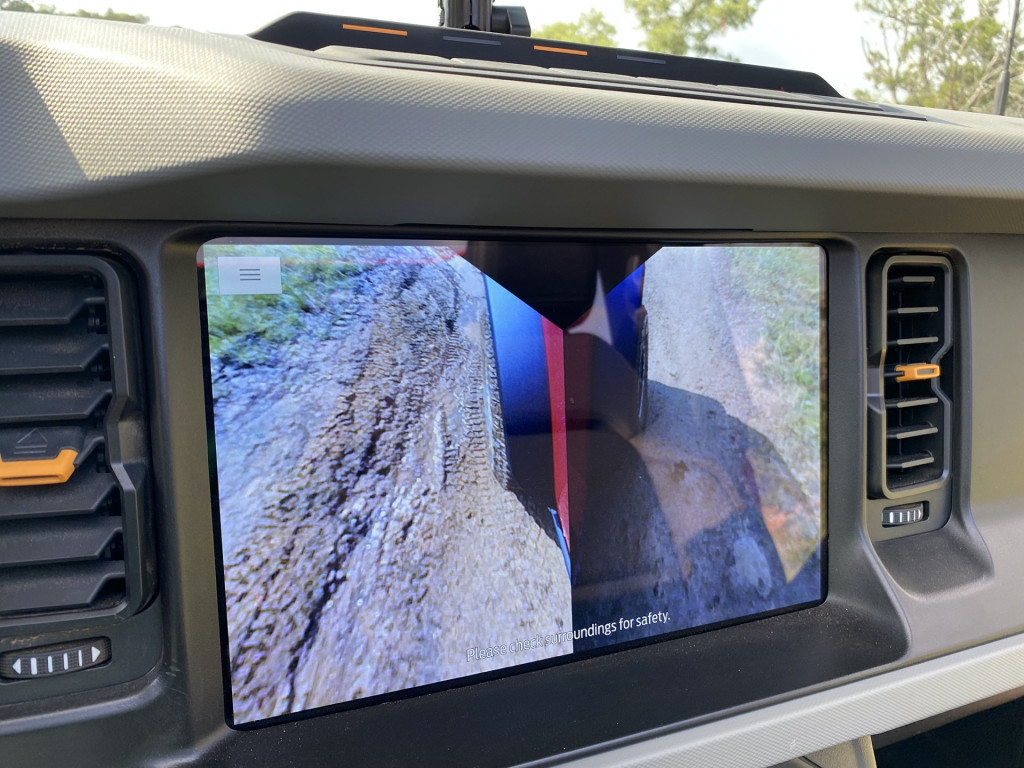
2021 Ford Bronco
In Mud/Ruts mode, the camera display spans the entire screen to project the view from a low point in the grille. A menu icon in the top corner lets you change to four different projections. A default view shows what’s beyond and under the trail sights on the broad hood, which is especially helpful for crawling. A surround-view projection splits the screen to the default front view on one side and a birds-eye projection on the other, with track lines on both predicting the course ahead based on steering angle. Two other cameras set in the side mirrors project views over the front wheels; a fourth view combines the front and side views for a nearly 180-degree projection from the front. It’s a wonderful off-road guide that can be appreciated by veteran off-roaders and relied upon by novices.
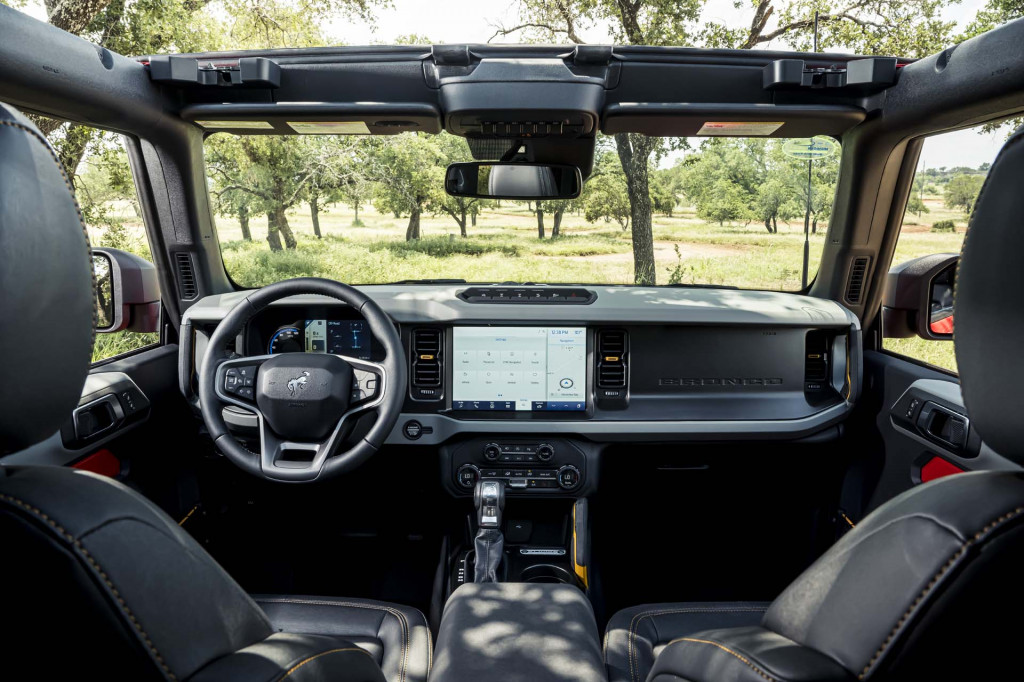
2021 Ford Bronco
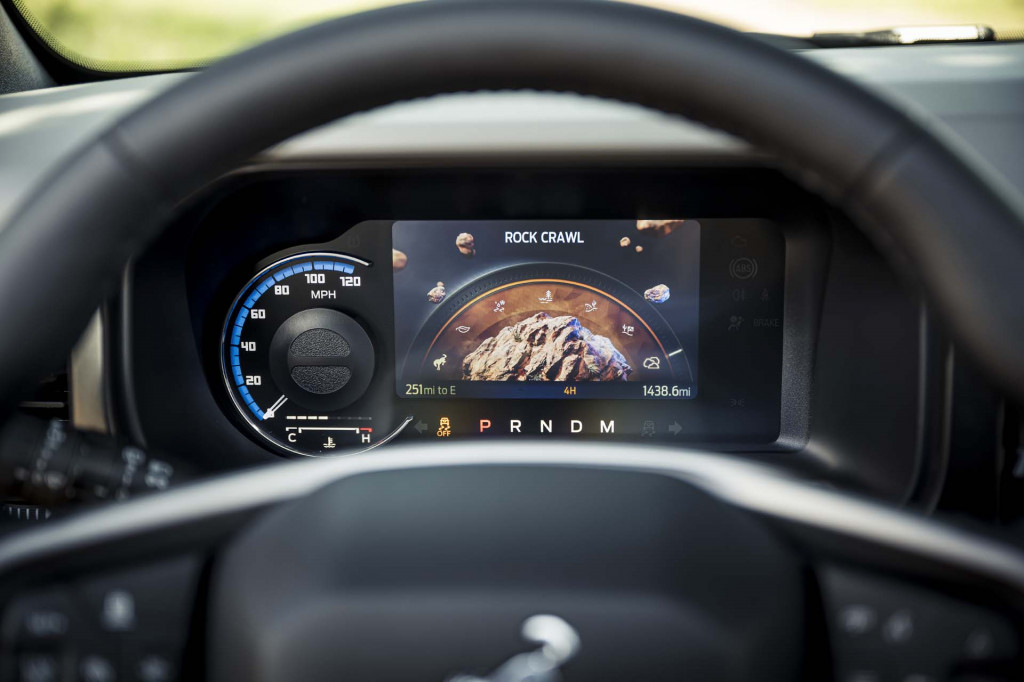
2021 Ford Bronco
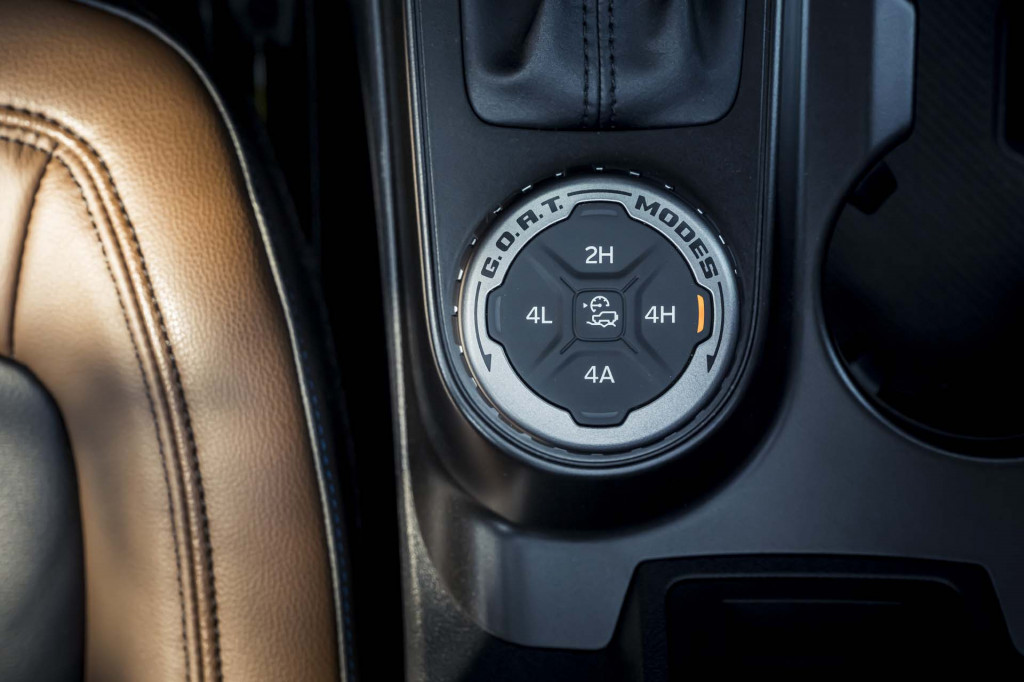
2021 Ford Bronco
The next leg of my Bronco experience is included in the purchase price for all Bronco and Bronco Sport buyers. The one-and-a-half day Bronco Off-Roadeo encourages owners to visit one of four locations in the U.S. to off-road the Bronco.
We tested the first location in the wilds outside of Austin, which opened Monday. Three courses led us into varied terrain with hot pepper names—Jalapeno, Habanero, and Ghost Pepper— indicating the trails’ level of technical spiciness. That doesn’t include the FunHaver 5-smile loop hot laps captained by Vaughn Gittin, Jr., Loren Healy, and Brad Lovell. Not only do they race Broncos in the Ultra4 off-road racing series, Gittin, Jr. and Healy helped Ford design the Off-Roadeo courses.
The high-speed ride-along turned portions of the mildest Jalapeno course into a three-alarm fire, and the spiciest of hot laps. The drivers got air from the start, then ripped uphill, whipped through corners before hitting two grades of mogul-like whoops at about 25 mph. It wasn’t the back-breaker I expected, and the Baja mode exclusive to the Bronco Wildtrak model was ideal for this terrain. Lap after lap, the Broncos seemed unfazed.
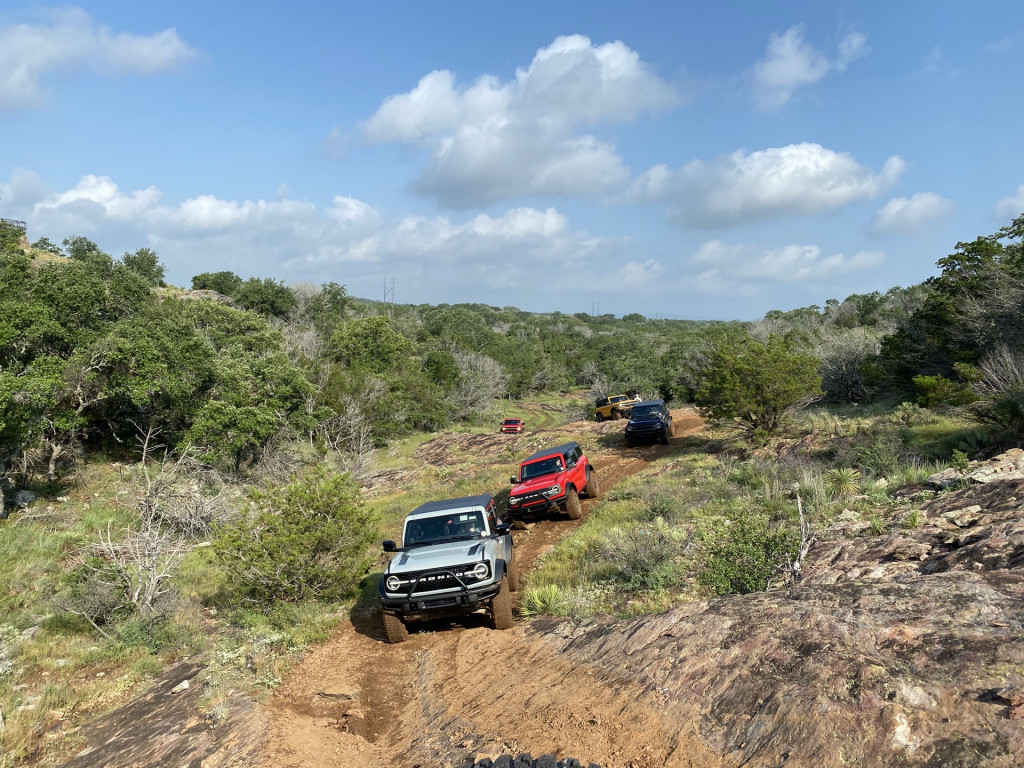
2021 Ford Bronco
Of the 50 Broncos available for testing, only two Outer Banks models had the base 4WD system. The Base, Big Bend, Black Diamond, Badlands, Wildtrak, and First Edition models had the uprated full-time 4x4 system with a Dana 44 solid rear axle and at least a rear locking differential. (For more on their differences, visit this overview.) The one Base model on the course, driven and launched by Gittin, Jr., came with the $4,995 Sasquatch package that adds a front locker, a high-clearance suspension and fenders, and Bilstein position-sensitive shocks with three zones of damping. Standard on Wildtrak and First Edition yet available across the lineup, the Sasquatch package comes with 35-inch LT315/70R17 Mud Terrain tires and 17x8.5-inch beadlock-capable wheels. That setup enables it to pursue a sasquatch deep into the wilds by fording up to 33 inches of water with a ground clearance of up to 11.6 inches, or 11.5 with the four-door model.
This was especially helpful on the mid-grade Habanero trail that took us through a small ravine and muddy creek swollen by recent rains. Water splashed up to the fender flares and the Bronco waded along, happy for the cool down from the deep Texas sun.
The Ghost Pepper trail, the most difficult, showcased the extent of the Bronco’s capability. The trail looped the surrounding hills and crested at a granite hilltop. During the entirety of this trail, the front stabilizer bar was disconnected to enable the most pliant suspension with the greatest level of articulation. Pushing one of the six available off-road buttons on the top of the dash disengages the sway bar up to 20 mph. Going faster than 20 mph reengages the bar, but it disengages again if the speed drops below 20 mph until you turn off the button. It balanced uneven loads on deep, rutted portions so all four wheels could scrabble for purchase.
2021 Ford Bronco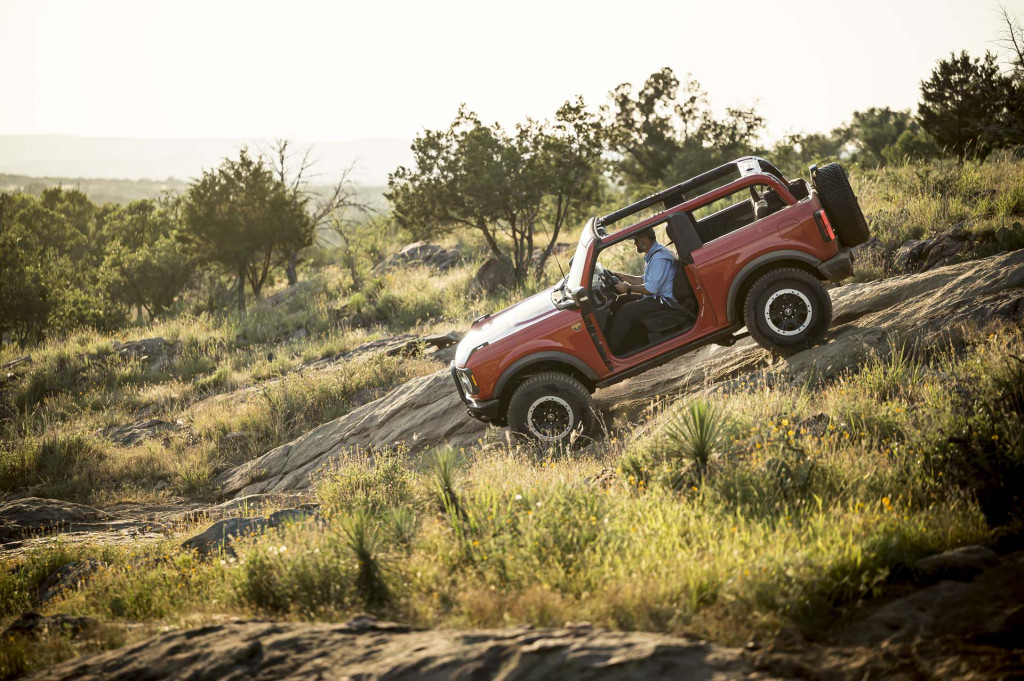
The front and rear lockers can be used independently, in the rare instance you’d want to engage the front but not the back. One S-curve on the ascent where the rear wheels were firmly planted proved optimal, and the Bronco scrambled around the sidewinder nimble as a goat.
The biggest challenge for the Bronco came climbing over a roughly 40-degree limestone shelf slick with mud. The other Broncos had no issue even as the front wheels spun and the rears grabbed and crawled. I wanted to test Ford’s Trail One Pedal Drive, which is a hill descent and ascent control that lets the driver focus on steering. It’s standard with the 2.7-liter, and in 4H it can be set like cruise control in increments of 1 mph; in 4L, it goes down to 0.5 mph increments. I set it to 1 mph to scale the shelf, but there wasn’t enough torque to get to the top; I rocked the rear wheels back down and set it to 2 mph. Same issue. At 3 mph, it eclipsed the lip and clambered over with no need to touch the pedals. I could have easily tapped the gas to give it that boost, then let it return to the chosen setting, same as cruise control. When the vehicle eclipses 20 mph, it disengages, then can reengage just like the stabilizer bar.
Another optional off-road feature is Trail Turn Assist, a torque inhibitor that locks the inside rear wheel for more precise turning around narrow hairpins or to effectively help you pivot instead of plow forward in sand. Consider a sand volleyball court and turning parallel with the net; with it on, I could do a tight 180 with plenty of room before the net. With it off, I would’ve barreled through the net onto the other side. It also worked well on a hard right turn less than 90 degrees, with the outside of the turn a strand of dense cedars and brush. With it off, I would’ve had to reverse out and re-angle the front.
2021 Ford Bronco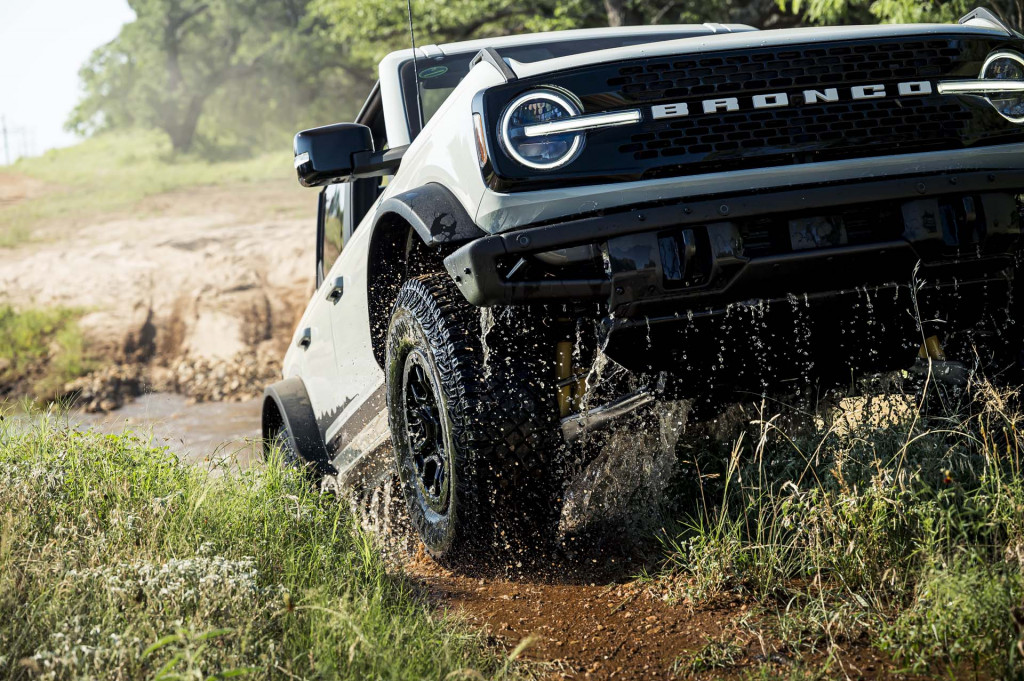
So, how does the Bronco compare to the Jeep Wrangler Rubicon? The Bronco is incrementally longer and wider than the Wrangler, with removable tops and doors that can be completed by one person in less time than a Wrangler, and it has Bronco’s better road manners that help it cast a wider net. The Wrangler’s interior, with its rugged switches and knobs, and traditional levels and controls, including a mechanical parking brake, appeals more to traditionalists.
The Bronco opens the doors to more shoppers considering an off-road vehicle, and we call that welcome competition. If there’s only room for one at the top of the off-road hill, it would get my money.
